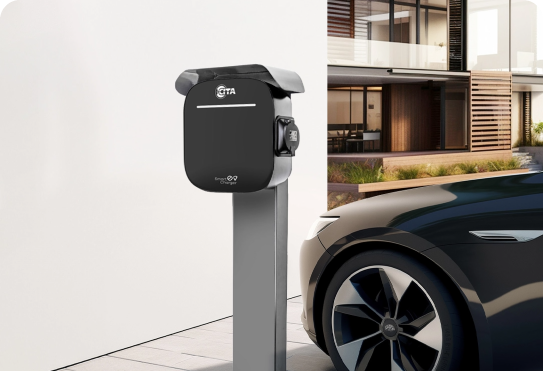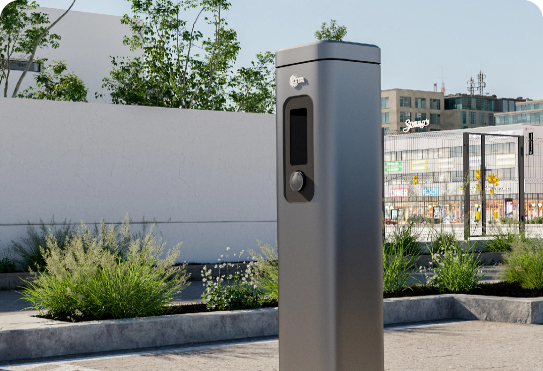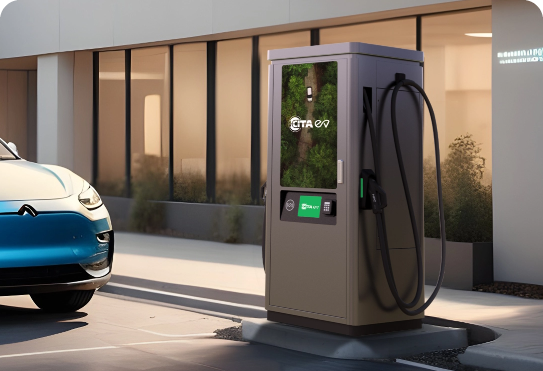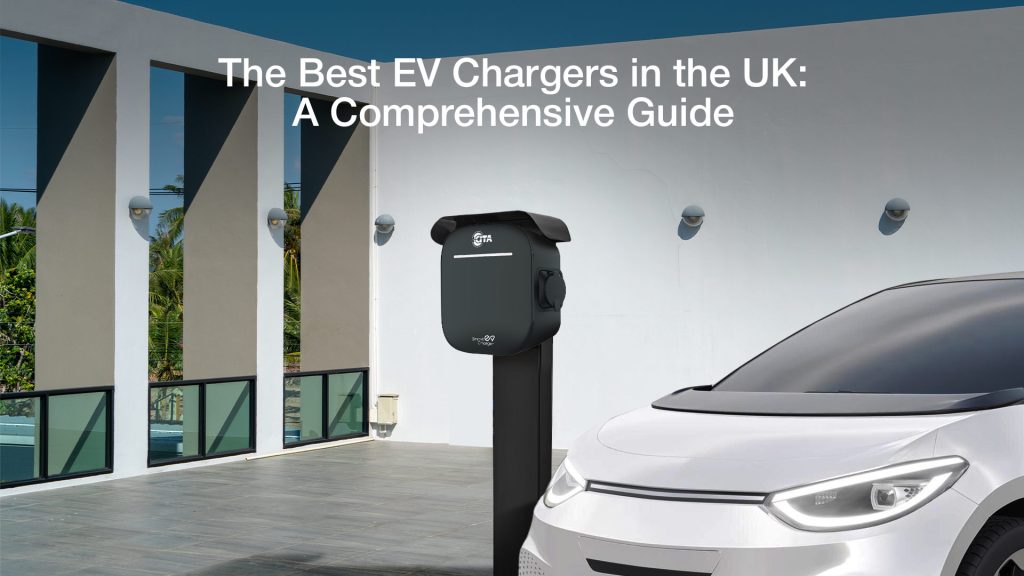EV chargers at public transport hubs can play a crucial role in accelerating the adoption of electric vehicles (EVs) in the UK. As the country shifts toward greener alternatives and sustainable energy solutions, installing EV chargers at public transport locations presents an excellent opportunity to expand the charging infrastructure. By integrating EV chargers at high-traffic areas such as bus stations and train terminals, more people will have access to reliable and convenient charging options. This can significantly impact the UK’s EV infrastructure, driving the transition to electric transport.
In fact, the UK government aims to have 300,000 public EV charging points by 2030, supporting the growing demand for EVs. These installations are not just about convenience; they are a strategic step in transforming urban mobility, making EV adoption more practical for commuters and helping to reduce carbon emissions in the long term.
By investing in such infrastructure, the UK is paving the way for a more sustainable and efficient future in urban mobility. CITA EV Charger is helping drive this change with cutting-edge charging solutions, offering reliable and scalable options to support the growing EV landscape.
Why EV Chargers at Public Transport Are Essential

As more people embrace electric vehicles, the demand for convenient, accessible, and reliable charging solutions has skyrocketed. EV chargers at public transport hubs address this demand by providing drivers with easily accessible charging points while they go about their daily commutes. Public transport hubs, such as bus stations, train stations, and subway terminals, are naturally high-traffic areas, making them ideal locations to deploy EV chargers. This not only supports the transition to electric vehicles but also contributes to reducing carbon emissions and enhancing the sustainability of public transportation networks.
The installation of EV chargers at public transport facilities brings multiple benefits, not just to individual EV owners but also to businesses, governments, and the general public. Let’s break down the advantages:
1) Encouraging EV Adoption by Making Charging More Accessible
One of the primary benefits of installing EV chargers at public transport locations is the increased accessibility to charging infrastructure. Many people who rely on public transportation might not have access to home charging facilities. Public transport hubs act as convenient charging points for these individuals, offering a practical solution to their EV charging needs.
Moreover, as more people switch to electric cars, the need for accessible charging stations becomes even more critical. Installing chargers at high-traffic public transport points will encourage new EV owners who may be hesitant due to the perceived inconvenience of finding charging stations. The availability of EV charging solutions at these locations will help bridge the gap and make EV ownership more appealing.
2) Supporting a Seamless and Sustainable Commuting Experience
With EV chargers at public transport hubs, the experience of commuting becomes more sustainable and seamless. Commuters can charge their electric vehicles while they wait for a bus, train, or metro, making the most of their time. This type of infrastructure not only supports EV owners but also helps to reduce range anxiety—a common concern among EV users who fear running out of battery before reaching a charging station.
For local governments and public transport authorities, integrating smart EV charging solutions into public spaces helps make cities more sustainable. By creating a network of strategically placed charging stations, they contribute to the growth of the green economy, reduce air pollution, and support the transition to clean energy solutions.
3) Boosting Local Economies and Creating Job Opportunities

Installing EV chargers at public transport locations also has a positive economic impact. When businesses see that an area is equipped with EV charging infrastructure, they’re more likely to invest in and develop it further. Charging stations at public transport hubs can attract additional foot traffic to local businesses, boosting the local economy.
Furthermore, these installations create job opportunities within the EV charger service provider sector. From the installation and maintenance of the chargers to the development of related technologies, the expansion of EV charging infrastructure can provide employment in both urban and rural areas. As more EV charger manufacturers enter the market, there will be a need for skilled workers to handle the growing demand for quality charging solutions.
4) Fostering Innovation with Cutting-Edge Charging Solutions
As part of an ongoing effort to develop robust and reliable charging infrastructure, EV charger manufacturers like CITA EV Charger are leading the way with innovative solutions. CITA EV offers high-quality AC EV chargers that are IP65 & IK10 rated, providing reliable protection from water and dust ingress. Our DC EV chargers, rated IP54, IP55, and IK10, offer advanced protection for urban installations, ensuring longevity and dependable operation even in demanding conditions.
CITA EV’s chargers are not only durable but also come in a range of power options, from 7kW, 11 kW, and 22 kW AC EV chargers to ultra-fast 60-360 kW DC EV charging solutions. These chargers are designed to cater to different needs, whether you’re installing for a small fleet or a busy public transport hub with multiple vehicles needing fast and simultaneous charging.
Moreover, smart EV charging solutions, like the Charge Point Management System and CITA EV App, allow users to manage their charging sessions remotely, ensuring a seamless and efficient experience. The advanced software solutions also enable real-time monitoring, maintenance alerts, and scheduling, making the charging process even more convenient for users.
5) Reducing Carbon Footprint and Contributing to a Greener Future

The environmental impact of installing EV chargers at public transport hubs is significant. By providing more EV charging points, you encourage the use of electric vehicles, which in turn helps reduce the overall carbon footprint. Traditional vehicles contribute to air pollution, while EVs produce fewer emissions, contributing to cleaner air and healthier urban environments.
The benefits of installing DC EV chargers and AC & DC EV chargers at key locations like public transport hubs align with the UK’s broader goals to reduce emissions and promote sustainability. These efforts are in line with the government’s push to meet its climate targets, aiming to significantly reduce carbon emissions by 2030 and phase out petrol and diesel vehicles by 2035.
6) Improved Efficiency and Flexibility for Charging Stations
For transport hubs with high vehicle turnover, AC & DC EV chargers provide essential flexibility. With the ability to fast-charge multiple vehicles simultaneously, these hubs can accommodate the increasing demand from electric vehicle owners while maintaining efficient operations. For example, CITA EV’s 44 kW Dual AC EV chargers allow for charging two vehicles at the same time, making them an ideal solution for busy public transport areas.
This flexibility is crucial for minimizing wait times, ensuring that EV users can charge their vehicles quickly and continue their journeys without long delays. Additionally, with the installation of AC EV chargers and DC EV chargers, public transport authorities can provide a faster, more efficient charging service to meet the needs of commuters and commercial vehicles alike.
7) Enhancing the Reputation of Public Transport Providers
Public transport providers that invest in EV charging solutions position themselves as leaders in sustainable transportation. The integration of smart EV chargers into public spaces not only boosts the provider’s reputation as an environmentally-conscious brand but also encourages public trust. A commitment to clean energy and supporting the growth of electric mobility reflects a forward-thinking approach that aligns with the values of the growing eco-conscious consumer base.
EV charger manufacturers like CITA EV Chargers are certified, ensuring that the chargers meet local and international safety standards. This guarantees that users will have access to trusted EV chargers and the best EV charging solutions available.
8) Future-Proofing the Transport Sector

As the demand for electric vehicles grows, future-proofing public transport infrastructure is essential. Installing EV chargers at public transport hubs not only meets the current needs of EV drivers but also anticipates future growth in electric mobility. Transport authorities and municipalities can stay ahead of the curve by investing in scalable charging solutions today.
By offering trusted EV charger supplier services like CITA EV Chargers, which offer long-term warranties (3 years for AC chargers and 2 years extendable for DC chargers), public transport hubs can ensure that their EV infrastructure remains functional and up-to-date as EV technology evolves.
Shaping a Sustainable Future

Installing EV chargers at public transport hubs is not just an investment in infrastructure; it’s an investment in a cleaner, more sustainable future. From reducing emissions and promoting green energy solutions to enhancing convenience for commuters and boosting local economies, the benefits are undeniable. By choosing high-quality EV chargers from trusted EV charger suppliers like CITA EV, public transport hubs can meet the growing demand for EV charging while supporting the transition to a more sustainable, electrified future.
As we continue to prioritize sustainability, public transport hubs have the potential to become pivotal centres for clean energy. This vision can become a reality with the right EV charging solutions, backed by reliable AC EV chargers, DC EV chargers, and innovative smart EV charging systems. The time to invest in a cleaner, more efficient future is now. Make the smart choice and take the first step toward building a sustainable, connected world by installing EV chargers at public transport hubs.
Let CITA EV Charger guide your transition with certified, top-rated charging solutions and dependable service. Together, we can power the future of urban mobility and ensure a greener tomorrow.












